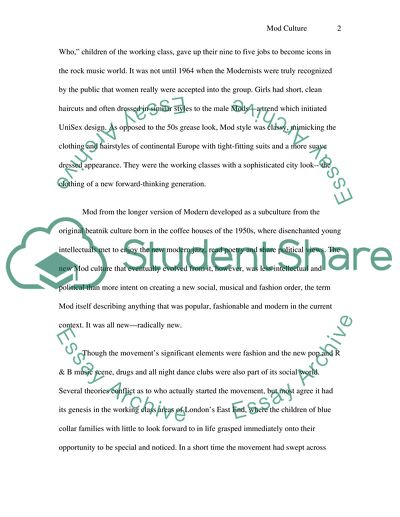Cite this document
(“Mod Culture and Fashion Research Paper Example | Topics and Well Written Essays - 2750 words”, n.d.)
Mod Culture and Fashion Research Paper Example | Topics and Well Written Essays - 2750 words. Retrieved from https://studentshare.org/visual-arts-film-studies/1573593-mod-culture-and-fashion
Mod Culture and Fashion Research Paper Example | Topics and Well Written Essays - 2750 words. Retrieved from https://studentshare.org/visual-arts-film-studies/1573593-mod-culture-and-fashion
(Mod Culture and Fashion Research Paper Example | Topics and Well Written Essays - 2750 Words)
Mod Culture and Fashion Research Paper Example | Topics and Well Written Essays - 2750 Words. https://studentshare.org/visual-arts-film-studies/1573593-mod-culture-and-fashion.
Mod Culture and Fashion Research Paper Example | Topics and Well Written Essays - 2750 Words. https://studentshare.org/visual-arts-film-studies/1573593-mod-culture-and-fashion.
“Mod Culture and Fashion Research Paper Example | Topics and Well Written Essays - 2750 Words”, n.d. https://studentshare.org/visual-arts-film-studies/1573593-mod-culture-and-fashion.


